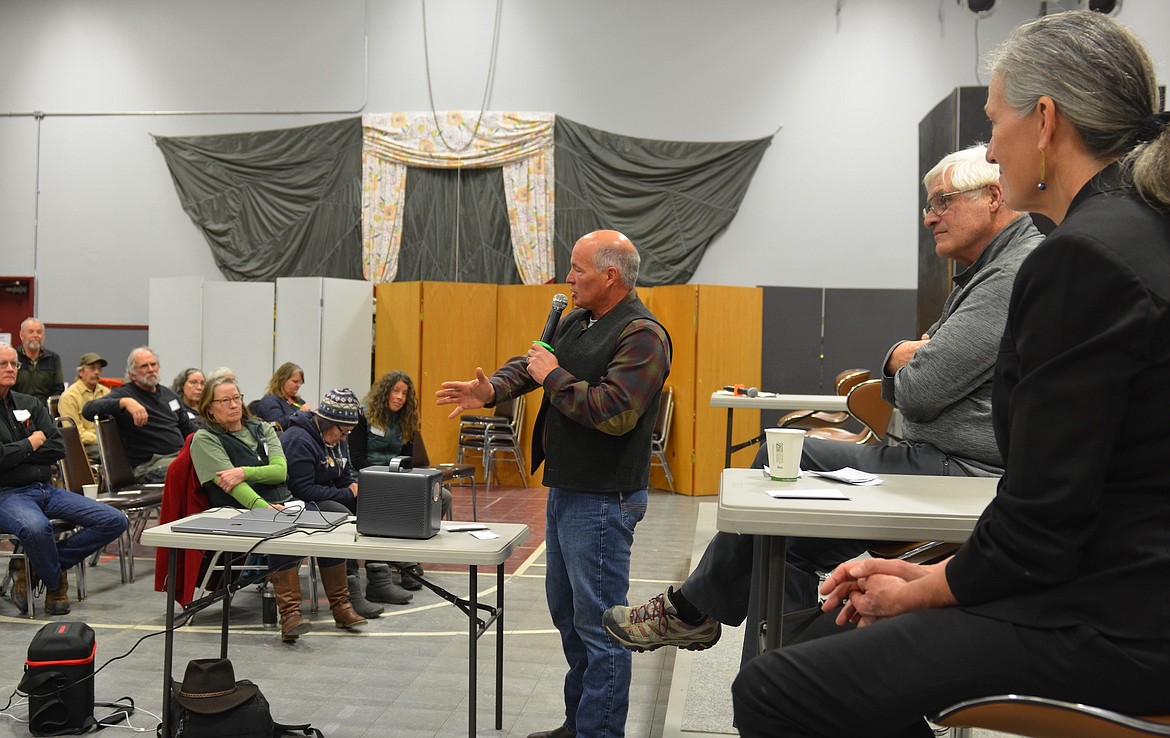Federal agency says Energy Keepers managed lake level appropriately
Flathead Lake was 2,884.66 feet above sea level Feb. 28, 2023, and sat at 2886.12 feet Tuesday. But neither elevation predicts the summer ahead, or whether a lowered lake level will continue to frustrate boaters and businesses.
Brian Lipscomb, CEO of Energy Keepers – the tribal entity that manages the Séliš Ksanka QÍispé Dam at the southern end of the lake – told a group recently, “We're worse off this year than we were last year at this time.”
“What's going to drive the summer operations is going to be how fast is that snow coming out of the mountains and do we get any rain to go along with it through the months of June and July,” he added.
Energy Keepers was at the epicenter of controversy last summer, when business and property owners around the lake claimed that mismanagement of the dam caused the diminished lake level, which dropped precipitously after reaching full pool the end of May.
But a recent response from the Federal Energy Regulatory Commission (FERC), which oversees the dam’s licensing requirements, vindicated Energy Keepers’ management of SKQ.
“Although the summer of 2023 brought a unique set of circumstances to the project, you fully operated your project in compliance with your license,” wrote Kelly Houff, chief of FERC’s Engineering Resources Branch Division of Hydropower Administration and Compliance.
Last summer’s low water levels elicited a flurry of protests, with a group called Save Flathead Lake organizing several public meetings. The organization’s objective is to keep the lake at full pool (2,893 feet) from June 15-Sept. 15 every year, regardless of other factors.
Montana’s governor, both U.S. senators and the state’s two U.S. representatives reached out to the Bureau of Reclamation, in hopes they could be persuaded to release more water from Hungry Horse Dam into the lake. The BOR declined, in part because that reservoir was also well below normal levels.
Letters received by FERC included concerns that “private boat docks were inaccessible, swimming and boating were hazardous, and lower lake levels affected some businesses which resulted in lost income.” Others suggested that Energy Keepers shouldn’t be allowed to meet downstream flow requirements when those flows imperiled recreational opportunities, and wanted public participation or hearings on the decision-making process.
In his response, Houff wrote that no public hearing was required because FERC “did not require deviation from your license requirements. In addition, you managed the lake levels to balance the license requirements for lake levels, drought management, flood control, recreation, and minimum flows to protect aquatic species downstream of the project.”
Although lake levels were lower than usual, he noted they still met requirements for lake elevation and minimum flows. “Further, no public safety incidents were reported to the Commission,” he wrote.
Lipscomb, who was part of a forum titled “Energy: Changes and Challenges” held Feb. 18 in Paradise, denies allegations that Energy Keepers prioritized electricity production over recreation last summer. “Our production of electricity from our hydroelectric facility in 2023 is the lowest on record,” he said.
He also believes the lower lake level was symptomatic of the broader implications of climate change.
“We're experiencing stuff that we have never seen before,” he told the audience. “We have flows coming into the lake that we have never seen before. And for the first time ever, they were thinking about closing fishing on the upper Flathead River because the rivers were so low.”
At the same time, glaciers – those vast repositories of snowpack – are disappearing. Last year, an unseasonably warm May brought the season’s snow accumulation gushing out of the mountains. However, inflows to the lake in June were 40% of average, and in July, 29% of average, establishing new record lows.
This year, snow levels are well below normal in most drainages. Lipscomb said projections put together by the Bureau of Reclamation and the Army Corps of Engineers indicate “we’re going to get to full pool, even with the water supply being what it is.”
How long it stays at 2,893 feet, however, depends on myriad factors. “If we don't get any rain, or if we get a fast melt off, and that runoff disappears quickly, the lake's going to immediately start going down to the minimum flows again.”
Energy Keepers are required to maintain certain minimum stream flows below the dam, which vary seasonally, from 3,200 cubic feet per second Aug. 1-April 15, then ramping up from 5,000 cfs to 12,700 cfs through June 30, before flows start to drop again.
Last year, however, after capturing May runoff, Energy Keepers used about 22% of the stored water in the lake to maintain minimum stream flows in the lower Flathead River. The elevation dropped significantly so that by June 30, the lake was nearly a foot below full pool and continued to plummet through the summer.
In his letter, Houff encouraged Energy Keepers to “continue to provide relevant information to the public during low flow conditions,” and “to voluntarily use the available reservoir storage space for recreational opportunities, to the extent that your license, hydrologic conditions, and drought and flood control constraints allow.”
The full FERC response is available at energykeepersinc.com/news.

